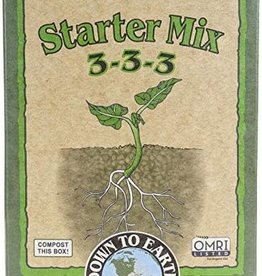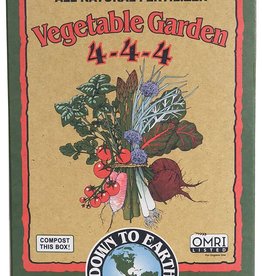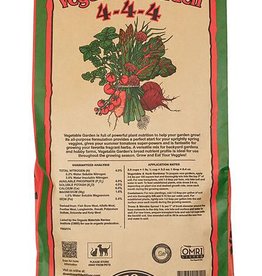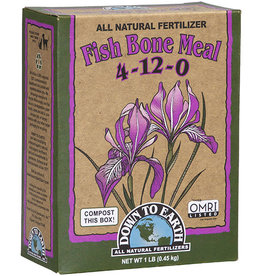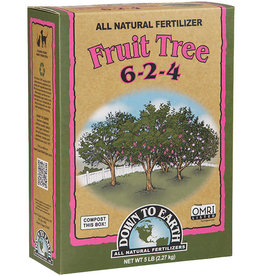DTE Granular Humic Acids 5lb
| Availability: | In stock (3) |
May increase micronutrient uptake by plants
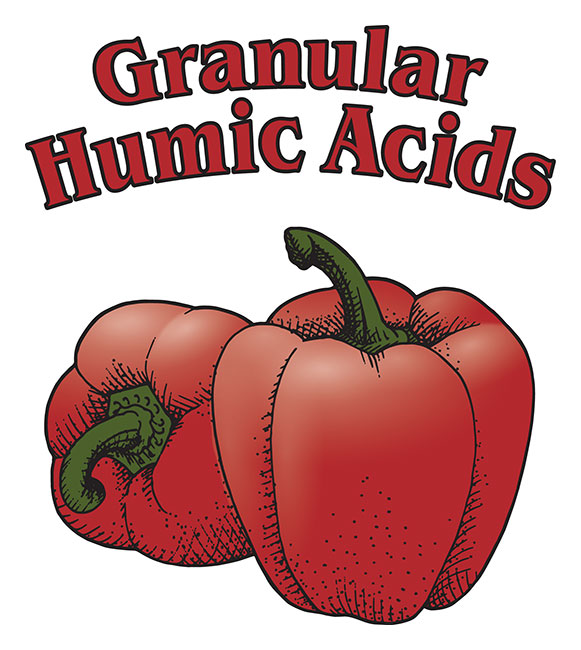
Down To Earth’s Granular Humic Acids is a highly concentrated source of humic substances that is ideal for use on fields, turf and vegetable gardens. Carefully mined from one of the world’s richest deposits, DTE Granular Humic Acids is derived from the ancient remains of decomposed organic plant materials. Naturally occurring, unaltered oxidized lignite, DTE Granular Humic Acids are crushed, screened and graded to a particle size of 1-3mm.
In order to understand humic acids, we must first talk about humus.
If we analyze the topsoil from this sample of farmland, we find that it is comprised of approximate 50% air and water, 45% minerals, 2% plant and animal remains, 2% humus, and less than 1% living organisms such as bacteria, fungi and insects.
The formation of humus is a continuous cycle. The first part is the breakdown of organic matter into its basic components by decomposers like fungi, insects and bacteria. Along with decomposition, is the slow degradation of rocks and minerals by natural weathering and “rock eating” organisms called lithotrophs. The second part of this cycle is the reformation of these broken-down particles into a variety of chemical compounds, collectively called humus. Eventually, these compounds will break down into molecules that are very chemically stable and resistant to further decay. These complex molecules are known as Humin, Fulvic Acids and Humic Acids.
Now that we have a basic understanding of the origins of Humic Acids, let’s talk about their relationship with plants.
Humic Acids’ high carbon content provides food for microbes, thereby improving soil ecology. But their primary benefit is their ability to chelate nutrients. The word “chelate” originally comes from the greek word chele meaning lobster claw – this refers to a molecule’s ability to hold on to ions.
Molecules of Humic Acids are negatively charged because they have lost positively charged hydrogen ions. This creates spaces on the molecules where positively charged particles, such as iron, copper, zinc, and manganese can attach. The root systems of plants are also negatively charged, but have a more powerful charge than Humic Acids. As a result, the humic acid compound is drawn to the plant root. The positively charged ions will then leave the organic molecule in favor of the root. The plant is able to absorb these important micronutrients and use them for growth and reproduction.
Positively charged ions are referred to as cations. The measurement of a soil’s ability to hold onto cations is called its Cation Exchange Capacity.
The mineral portion of soil is comprised of various combinations of sand, silt and clay. Because clay particles have a strong negative charge, soils with large percentages of clay have a high Cation Exchange Capacity, which reduces leeching of the positively-charged cations. Sandy soils have a low Cation Exchange Capacity, so some nutrients are more likely to be washed away from the root zone. Because of their ability to chelate cations, Humic Acids may have the ability to raise the Cation Exchange Capacity of soil, making nutrients more readily available to plants and making fertilizer applications more efficient.
For this reason, we add Humic Acids to most of our Down To Earth fertilizer blends. If you prefer to add fertilizers individually, we offer several options to incorporate humic products into your garden. Our Granular Humic Acids are best mixed directly into the soil. For liquid and foliar applications, use HumaPlex soluble powder or Liquid FulPlex Gold.
Our humic products come from one of the world’s richest deposits of humic substances, known for its high humic and fulvic acid content.







